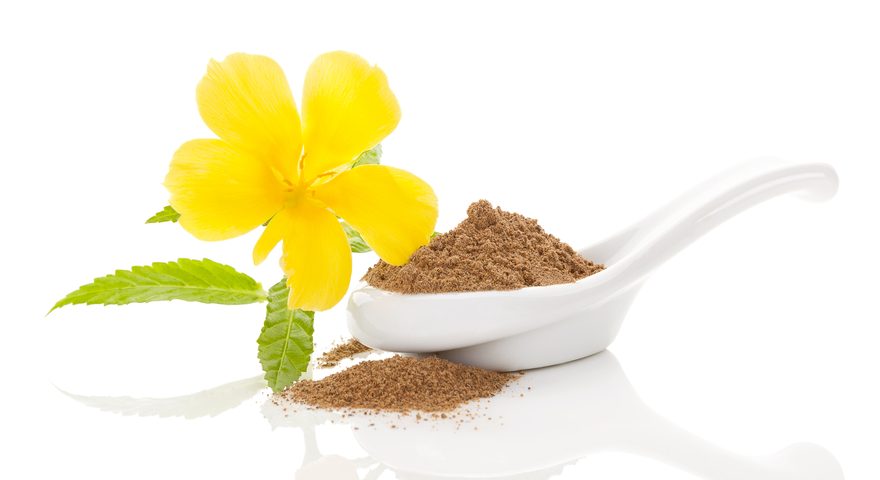
If you’re into herbs and want to learn about the differences between two popular plants, kava and damiana, read on! This post will explore the origins, benefits, and possible side effects of each.
What is Kava?
Kava, a relative of black pepper, is a plant that originates from many islands in the pacific ocean. Indigenous cultures would grind the root into a pulp, mix it with water, and consume it during ceremonies or social gatherings.
Kava has a set of powerful effects. It relaxes the muscles, eases the mind from anxiety, and gradually helps us drift off to sleep. In high doses, kava can produce a sensation similar to intoxication from alcohol, but without compromising our clarity of thought. Instead, we feel euphoric, lazy, and carefree.
In the Western world, kava has become very popular as an alternative to alcohol, with the appearance of kava bars all around the world. Kava can be taken as a health supplement in the form of tinctures, capsules, or tea, or it can be consumed socially in the form of drinks or tea.
What is Damiana?
Damiana has the botanical name Turnera diffusa. It’s a small flowering plant with aromatic leaves. The scent of damiana was used to flavor liqueurs and is believed to be the original flavor for margaritas.
This herb comes from Mexico and Central and South America. It loves warm, humid weather, and tends to grow in areas that are unsuitable for other plants such as in dry spots alongside roads or fields.
Damiana is primarily used for its relaxing effects, but also has a long history of use as an aphrodisiac. There’s some research suggesting damiana can be used to prevent antibiotic resistance to medications as well but this isn’t a common use for the herb at this time.
Most people use damiana in the form of tinctures, capsules, or tea but it can also be smoked. Much like kava, large doses can cause a mild inebriation. With damiana, the effects of inebriation tend to be more in the mind producing feelings of euphoria and arousal.
Where Do Damiana and Kava Grow?
Damiana is a small flowering plant that grows in Mexico and Central and South America. Kava is a plant that grows in the Pacific islands.
How to Use Damiana and Kava
The most common way to prepare the Kava beverage is to use the sun-dried roots of the plant.
For several centuries together, roots dried this way were infused in a hot beverage consumed during social gatherings. Kava’s prominence as a social adhesive is a well-documented cultural feature of the Pacific islands. Kava can be either drunk socially or taken as a health supplement.
Even today a popular way of consuming kava is by soaking the dried leaves or roots in water to make drinks or tea. You can also powder the roots and mix them with coconut milk. People get creative with kava – you can add the extract to candies or smoothies, and there are even some reports of people smoking it.
Damiana’s leaves and steam are dried and used in powdered form. It’s added to water and ingested.
How are kava and damiana used ceremonially?
Kava and Damiana are used ceremonially in the Pacific islands and Mexico, respectively. Kava is most commonly used in social gatherings where people drink it together. It relaxes the muscles, eases the mind from anxiety, and gradually helps us drift off to sleep. In high doses, kava can produce a sensation similar to intoxication from alcohol, but without compromising our clarity of thought. Instead, we feel euphoric, lazy, and carefree. Kava ceremonies often last for hours and are a vital part of community life.
Damiana is most commonly used as an aphrodisiac. It has been used for this purpose for hundreds of years in Mexico and Central and South America. Damiana is also used to prevent antibiotic resistance to medications as well but this isn’t a common use for the herb at this time. Damiana is usually taken in the form of tinctures, capsules, or tea, but can also be smoked. Much like kava, large doses can cause mild inebriation. With damiana, the effects of inebriation tend to be more in the mind producing feelings of euphoria and arousal.
How should you take damiana and kava?
When it comes to kava, there are a few things to keep in mind. First, it’s important to not take it with alcohol or any other depressants as this can lead to negative interactions. Second, because of the way kava affects the brain, it’s not recommended to operate heavy machinery or drive after consuming it.
Third, kava should not be taken in high doses as this can cause mild inebriation. Finally, kava should not be taken if you are pregnant or breastfeeding.
Damiana is a safe herb to take, but as with anything, it’s always a good idea to talk to your doctor before starting any new supplements. Generally, damiana is safe to take in doses of up to 900 mg per day. As with kava, it’s not recommended to take damiana if you are pregnant or breastfeeding.
Can Kava Damiana Be Mixed?
There is no one right answer to this question as everyone may have a different reaction to the herbs when mixed. It is always best to start with a small amount and increase as needed. Some people find that the combination of the two herbs enhances the effects of each, while others find that the combination leaves them feeling a little more off than either herb does on its own. As with anything, it’s always best to start with a small amount and increase as needed.
How to Mix Kava Damiana
Kava and Damiana can be mixed in many different ways to create different effects.
One way to mix them is to make a tea. This is done by boiling water, then adding the damiana and kava and letting it simmer. Steep for about 10 minutes, then strain and drink.
Another way to mix them is to make a tincture. This is done by adding the damiana and kava to a jar, filling it with vodka, and letting it sit for about two weeks. Shake it every day. After two weeks, strain it and drink.
Yet another way is to make a capsule. This is done by adding the damiana and kava to a pill maker, then filling the capsules and taking them.
And finally, you can mix them in a drink. This is done by adding the damiana and kava to a blender, then adding your choice of liquid – such as fruit juice or milk – and blending.




